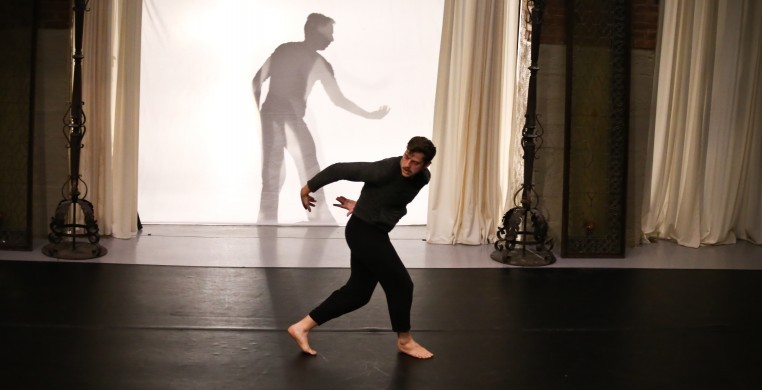Seeing Mordine & Company Dance Theater last weekend felt a bit like attending a cocktail party at Shirley Mordine’s house (presumably). The casual atmosphere at Constellation/Links Hall’s lobby bar filtered into Studio A, with Mordine popping on and offstage between pieces to share tidbits and anecdotes about each piece. Indeed, Shirley Mordine is a woman who needs no introduction. She floated onstage and burst into a story about how the evening’s first piece, “Early Being” (1988) was once performed by Mary Wohl-Hahn, while gesturing to her in the third row of the audience. Dancer Melissa Pillarella reconstructed the work on her own from a video, said Mordine, and though clear from the water-colored unitard and post-modern movement vocabulary that this is an old work, its primordial noodling and explorative articulations remain salient today.
Mordine’s latest work, “Cast by the Sun” was preceded by “Thin Ice” (1991), another gem from the company's archives. The duet for two men was originally performed by Carl Jeffries and Jeff Carpenter, whose life recently met a tragic ending. Zachary Bird and Michael O’Neill’s beautiful restoration was a delightful surprise, and “Thin Ice” was most successful in moments of yin/yang between the two men as they battled against one another with some strong partnering.
After 46 years of making dances in Chicago, “Cast by the Sun” proves that Mordine is, quite amazingly, still inspired. A couple dancers gather behind a back-lit muslin cyclorama set at mid-stage, casting shadow figures into the space to accompany the other cast members. The work comes across a bit uncooked, with clunky transitions that include a nearly onstage costume change behind the DIY cyc after it is shifted to the side by the dancers. Perfectly polished, however, is live percussion accompanist Peter Ferry, who adds much to a work inspired by a single quotation from Leonardo da Vinci. “Cast by the Sun” is most effective in its final section, when the dancers move in an out of the floor, between stillness and sensitively-timed directional phrases complimented by the lovely amber glow of incandescent torches (from Joshua Paul Weckesser).
Though not astounding in any particular way, the short and casual evening from “Mo & Co” was a sentimental reminder of the rich heritage of modern dance in Chicago. To see Mordine’s work is to see where we all come from; indeed, there are few dancers in Chicago who have not passed through Shirley’s hands, in one way or another, and to know her and her work is to know Chicago dance.
Note: to be considered for press coverage on SeeChicagoDance.com, submit press materials to editor@seechicagodance.com and post your event here

